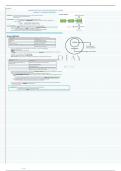Class notes
Lecture Notes PSYC 1010 - Introduction to Psychology (Lectures 1-4)
- Course
- PSYC 1010
- Institution
- York University (Ebor )
Lecture Notes of PSYC 1010 - Introduction to Psychology of lectures 1, 2, 3, 4 covering textbook modules 1, 2, 3, 44, 45, 46; at York University, Toronto, Canada.
[Show more]



